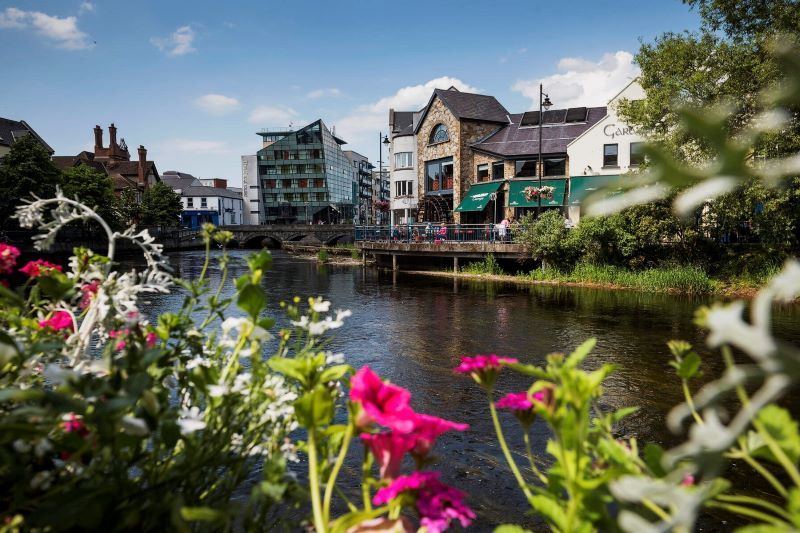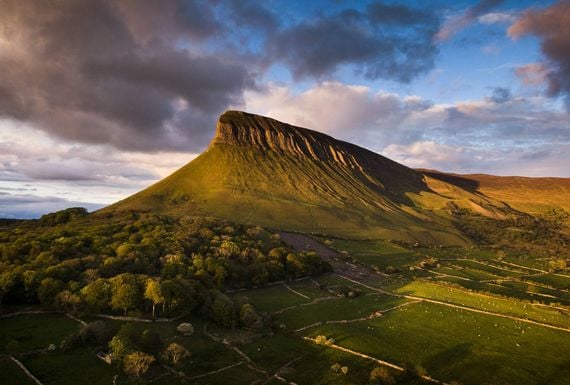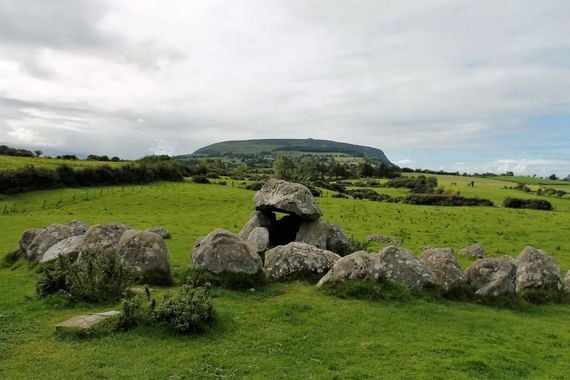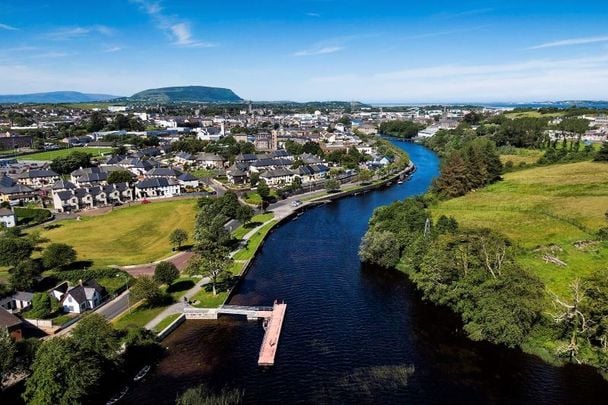Take a look at some interesting facts about County Sligo from its common surnames to famous Magpies.
Irish name: Sligeach, meaning "A shelly place"
Nickname: Yeats County, The Magpies
Population: 65,393
Area: 709 square miles
Province: Connacht
County town: Sligo
GAA colors: Black and white

Sligo Town, County Sligo. (Ireland's Content Pool)
Read more
Common surnames in County Sligo
Gallagher, Brennan, MacGowan, Kelly, Gilmartin, Healy, Walsh, Hart, Feeney, MacDonagh, Loughlin, Connor, Beirne, Conlon
Famous people with roots in County Sligo
WB Yeats, Edward P. Doherty (allegedly caught Lincoln assassin John Wilkes Booth), Bram Stoker, Neil Jordan, Brother Waldred (founder of Glasgow Celtic FC), Countess Markievicz, Bernardo O'Higgins (former President of Chile).
A brief history of County Sligo
Archaeological studies suggest that Sligo may have been one of the earliest places of human settlement in Ireland.
The megalithic cemetery of Carrowmore dates back to the Stone Age and is part of a huge complex of remains connecting Carrowkeel in south Sligo to the Ox Mountains, to the Cuil Irra Peninsula, where Queen Maeve's tomb, Miosgán Médhbh, dominates the western skyline from the crest of Knocknarea Mountain.
Famous medieval manuscripts written in County Sligo include the Book of Ballymote, the Great Book of Lecan, and the Yellow Book of Lecan. The patron of the Annals of the Four Masters was Ferghal O Gadhra of Coolavin in south County Sligo.
Sligo was not officially a county until after the Nine Years War, in 1603. Its boundaries reflect the Ó Conchobhair Sligigh overlordship of Íochtar Connacht (Lower Connacht) as it was at the time of the Elizabethan conquest.
This overlordship consisted of the territories of Cairbre Drumcliabh, Tír Fhíacrach Múaidhe, Tír Ollíol, Luíghne, Corann and Cúl ó bhFionn. Each of these was made into an English-style barony, hence Carbury, Tireragh, Leyny, Tirerril. Corran and Coolavin. The capital of the newly shired county was placed at Sligo.
Key attractions in County Sligo
Benbulben Mountain is said to be Ireland’s most distinctive and is known, by some, as Ireland’s version of the Table Mountain. Many legends and tales have been woven around Benbulben. Mysterious, shady valleys dominate the landscape in this upland, alpine-like region.

Benbulben Mountain in County Sligo. (Ireland's Content Pool)
W.B. Yeats’ Grave at Drumcliffe Graveyard. Irish poet William Butler Yeats chose this peaceful churchyard at Drumcliff in County Sligo as his final resting place, with its stunning location at the foot of Benbulben Mountain. The graveyard includes the remains of a round tower and a high cross, constructed in the 11th when there was a Christian monastery on the site.
Carrowmore Megalithic Cemetery is the largest and one of the most important megalithic sites in Europe. Over 60 tombs have been located by archaeologists. The oldest dates back to Newgrange by 700 years and is older than the pyramids.

Carrowmore Megalithic Passage Tomb Cemetery, County Sligo. (Ireland's Content Pool)
Sligo Folk Park is located in the beautiful village of Riverstown, in the southern part of the county. This community-based attraction provides a true experience of rural life and Irish heritage in the late 19th century. The Folk Park is set in the grounds of the authentically restored Millview House, which was originally built in 1873 by George Reid, a farmer, shoemaker and church sexton.
*Originally published in 2016. Updated in May 2025.




Comments